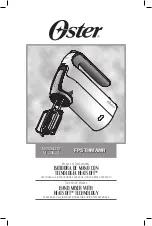
5
2.1 Front-Panel Description
2.1.1 MONO Channel 1~6
1
. MIC (CH1~6)
The Microphone is via a standard female XLR-3 connector. Please use only
professional low impedance microphone and proper wired cable for best
result.
48V Phantom Power Slide-Switch (CH1~6 on the back panel)
+48V Phantom Power and slide- switch on/off is available on each
microphone input channel. All faders (Group 1, Group 2, Mono, ST
and CH1~14) should be all the way down when switching on phan-
tom power, in order to prevent excessive noise to stage monitor
speakers and main speakers; Phantom powered microphone should
not be plugged in with the +48V switched on.
2
. LINE (CH1~6)
Line input with 1/4
phone jack socket. Plug in this jack socket will
automatically change the input trim from MIC to LINE and switch to
different TRIM accordingly; any connection to the Mic input should be
unplugged when the Line input is in use.
3
. INS
The INSERT is a break point in the input channel signal path. It allows the
signal to be taken out from the mixer, through an external piece of equip-
ment such as a compressor and then back to mixer to continue the final
mix output.
Standard connection as tip-ring-sleeve for send-return-ground.
Properly utilize the outboard gears is the general practice for the working
pro. Please check out Phonic lines of signal processor products; such as
PCL 3200, PCL 4200 .
4
. TRIM
This rotary knob adjusts the channel signal level. Too high, the signal will
distort as it overloads the channel. Too low, the level of back hiss will be
more noticeable and you may not be able to get enough signal level to the
output of the mixer. Proper trim setting allows the mixer to work in the
best operating level, adjust the trim when signal presents to the highest
level without triggering the peak LED. That is the most appropriate posi-
tion.
This trim has two kinds of indication to suit mic or line input, when you use
mic input, please read inside ring from 0~+60 dB, if you use line input,
Summary of Contents for MM 1805
Page 1: ......
Page 24: ...23 3 2 VIDEO POST PRODUCTION 3 APPLICATION 3 1 DJ MIXING ...
Page 25: ...24 3 3 SUBMIXING ...
Page 26: ...25 3 4 STANDARD CONNECTION ...
Page 27: ...26 4 APPENDIX DIGITAL EFFECT MODE AND PATTERN EFFECT 1 ROOM EFFECT 2 HALL ...
Page 28: ...27 EFFECT 3 PLATE EFFECT 4 CHAMBER ...
Page 29: ...28 EFFECT 5 GATED REVERB EFFECT 6 REVERSE REVERB ...
Page 30: ...29 EFFECT 7 MONO DELAY EFFECT 8 OFFSET DELAY ...
Page 31: ...30 EFFECT 9 MONO TAPPED DELAY ...
Page 32: ...31 EFFECT 10 MULTI TAP DUAL DELAY ...
Page 33: ...32 EFFECT 11 ST CHORUS EFFECT 12 ST FLANGE ...
Page 34: ...33 EFFECT 13 CHORUS DELAY ...
Page 35: ...34 EFFECT 14 FLANGE REVERB ...
Page 36: ...35 EFFECT 15 CHORUS REVERB ...
Page 37: ...EFFECT 16 DELAY REVERB 36 ...
Page 38: ...37 5 SPECIFICATIONS ...
Page 39: ...38 6 SYSTEM BLOCK DIAGRAM ...
Page 40: ......







































